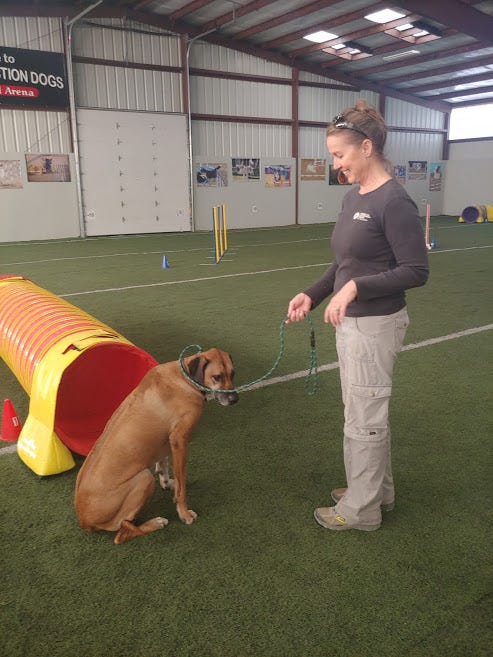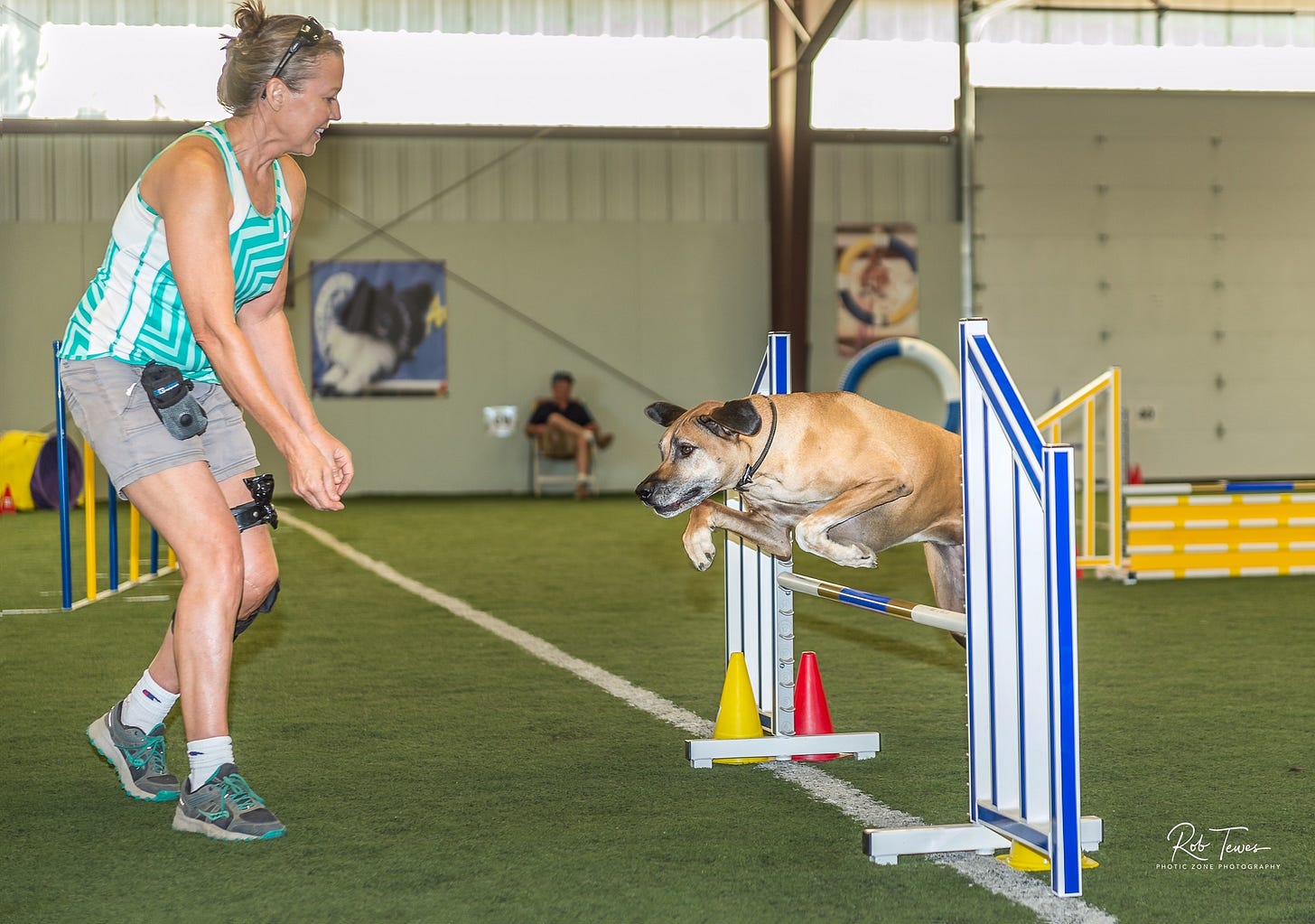In August of 2019 I agreed to foster a five-year old Rhodesian Ridgeback named Freya. My previous Ridgeback, and soul-dog, Tessa, had passed a few months earlier sparking the deepest grief I’d ever experienced. I wasn’t yet ready for the next dog but thought fostering would be a good bridge and help out a being that needed some support. Freya was 100 pounds, untrained, unsocialized and had both anxiety-management and enthusiasm-management issues. LottaDog became her instant nickname. She had been bumped from home to home several times even as a young puppy and despite the difficulties handling and living with her, I couldn’t bear casting her out once again, so, not too surprisingly, I became a foster failure. The “LottaDog” name stayed with her, frustratingly fitting, for the rest of her life.
Though I’d never done any dog sports or serious obedience work, I had had a lot of dog training experience. Nonetheless I knew I needed some professional help with LottaDog and I enrolled very large, middle-aged Freya in puppy kindergarten classes. When those sessions ended I was looking for the next step to help her build confidence and social skills, and grow the bond between us. I signed us up for a beginners agility class that was just starting. Walking into that arena the first time there was no way I could have known how much my life was about to change. In fact, all of our lives were about to change because just a couple months later the COVID pandemic hit.
As we all know most of us went into lockdown and restaurants, community venues, schools, churches and gyms closed. However, the agility classes were able to keep going because they were held in a ventilated arena with plenty of space to maintain the mandated “social distancing”. This was such a blessing and filled many niches during that weird time – exercise, social interaction, making new friends, and learning something brand new with others. Most importantly it was great for Freya. The physical exercise, mental stimulation, and seeing the same dogs and people each week helped her begin to relax. And boy-oh-boy did she love the training snacks!
Her joyfulness when she was successful with a skill or obstacle and got to scarf up a snack was lovely to witness. I began researching dog agility and something sparked. As a middle-aged, busted up (as in knee reconstructions, broken legs) former athlete (horses, soccer, racquetball) I knew I’d found my next thing.
Now Freya had a lot of athleticism and courage on the obstacles but she was much more into her nose and gut than working for the sake of working. She’d do great for a few minutes, then gallop up to a jump and stop; I usually had to throw a cheese puff over to keep her moving. It was clear her calling was not competitive agility, so I began thinking about a second dog, and gradually, then suddenly, I decided to get another pup.
I’d always been leery of the herding breeds, concerned I wouldn’t enjoy living with the drive and intensity. However, the agility bug had bitten me and in September of 2021 I got a tiny black and white Border Collie pup from Herd U Needed a Home (Hunah) rescue.
Olive was tiny and pushy but God bless Freya she loved her and tolerated her far beyond what I’d expected. In some ways I think Olive gave Freya both a chance to have the puppyhood she hadn’t experienced and demonstrate some maternal instincts.
I was amazed at Olive’s trainability and her desire to learn, learn, learn. Freya loved both the attention and the snacks that came with all the extra training sessions and she enjoyed doing the obstacles from time to time and getting praise, and more snacks.
LottaDog passed last December and I still miss her more than expected; frustrating, pushy Freya filled more of my heart than I’d realized. Olive visibly missed her for several months.
I often say that Olive (AKA Livvy or the Amazing Livvy Lane) is my first agility dog but that’s not really true. Freya was first and I will remain ever grateful to her for being just the right catalyst to lead to a whole new path and passion.







